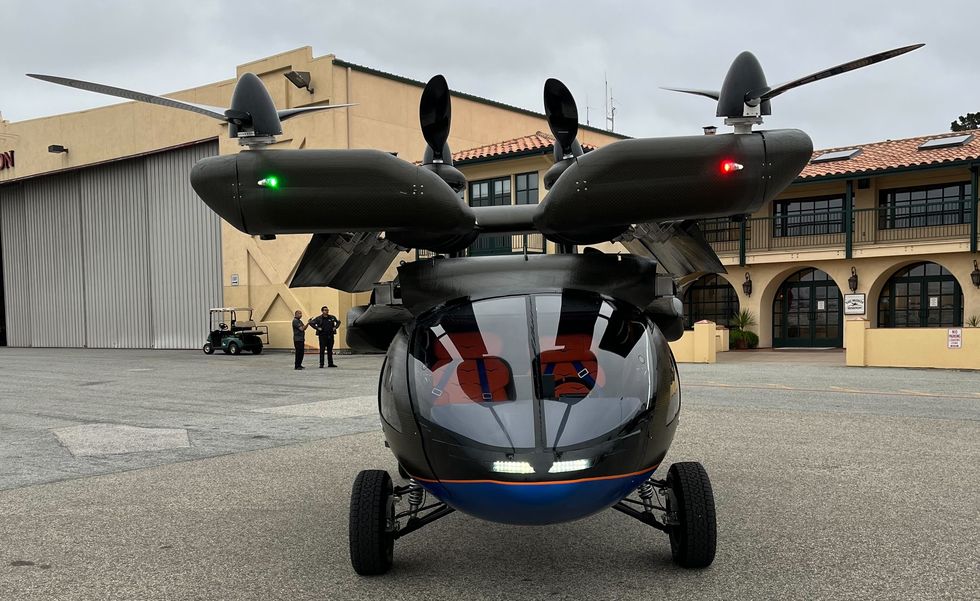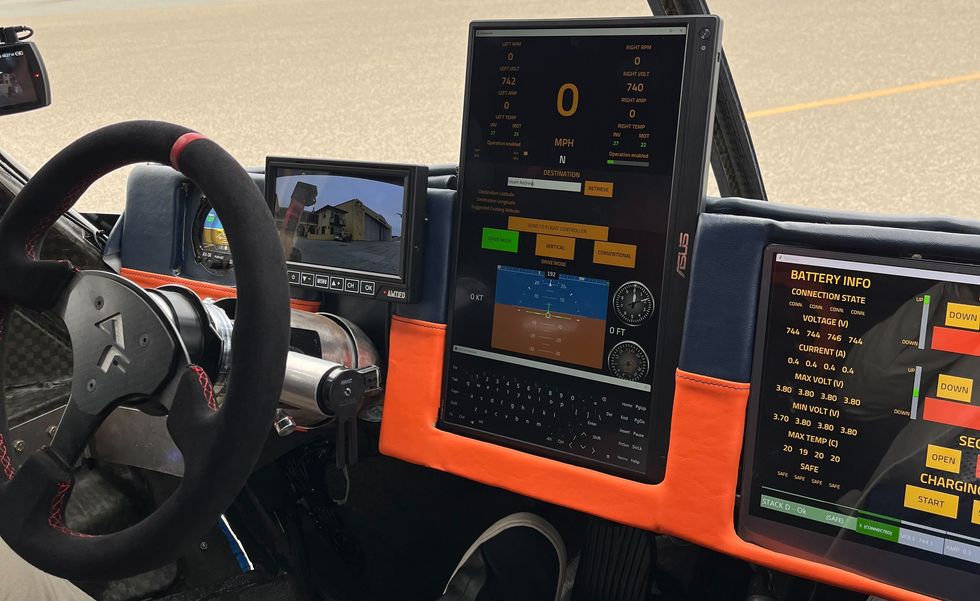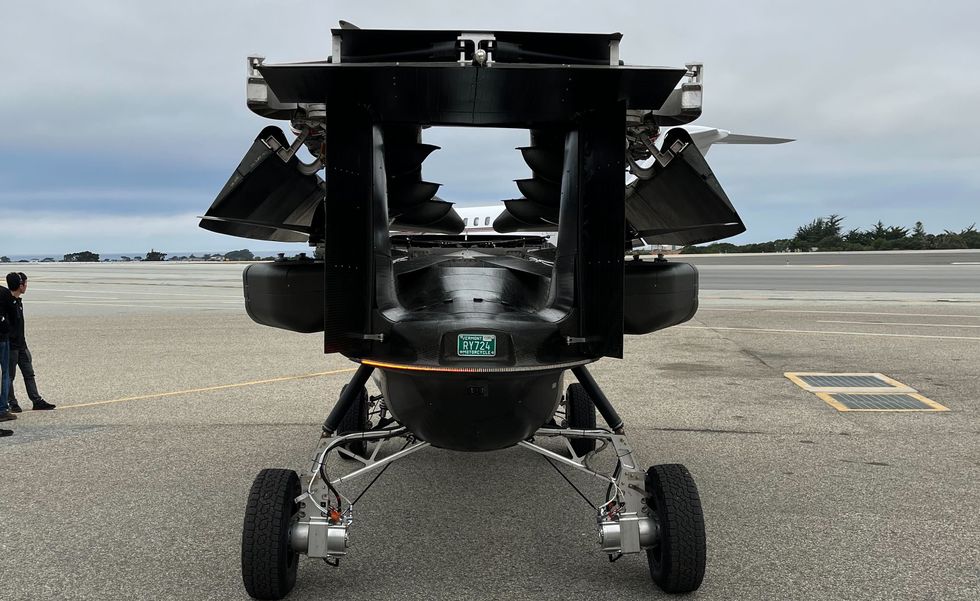- Northern Californian company Aska showed this prototype of a flying car during Monterey Car Week that it hopes to produce within two to three years.
- The Aska A5 flying vehicle can take off both vertically and horizontally, an improvement on the “flying car” idea.
- The plan is to use these planes as rentals or taxis, priced at around $800,000, and 100 prospective buyers have already placed reservations, a spokesman told Car and Driver.
Flying cars have been teased as a someday technology for decades, long before self-driving cars became the just-around-the-corner technology to chase. A few, such as Terrafugia, made real strides but, ultimately never made it to market. Now there’s a new player promising to land the dream in two or three years’ time.
Aska, a company located in Northern California, has been engineering a solution with a team of about 50 for the past six years, and we got a quick (land-bound) ride in its first prototype during the Monterey Car Week happenings. It’s still very early, and rough, but Aska has a further innovation on the flying-car concept, as it can take off vertically as well as horizontally like a typical plane. That means it could get in and out of much smaller spaces. In fact, CEO and co-founder Guy Kaplinsky has grand visions of converting gas stations, many of which he sees going out of business with the transition to electric cars, into landing pads for his creation.
The Aska A5 will seat four, and is propelled through the air by six propellers, four of which can rotate from a vertical to horizontal orientation to facilitate the transition from takeoff to flight. The Aska can also take off conventionally, in which case its acceleration is boosted by an electric motor at each rear wheel. Power for the 5000-to-6000-pound craft—Kaplinsky promises the production version will be lighter—comes from a roughly 100.0-kWh battery pack, with a gas-powered range extender to make more electricity when needed. Flying range is a claimed 250 mph with a 150-mph cruising speed.
To convert to driving configuration, the front and rear wings fold over the fuselage, which takes about a minute, and the wings have to be secured to keep them from bouncing around with road impacts. This is currently a manual process, but an auto-locking mechanism is right around the corner, according to Kaplinsky. Really, a more accurate name is a “driving plane” rather than a “flying car,” however, as the Aska won’t meet all of the regulatory requirements to be fully street legal. Instead, it will be registered as a neighborhood electric vehicle.
Kaplinsky envisions that the driving part would be typically fewer than 10 miles, just to get to an appropriate takeoff location, and that the A5 would typically be operated as a rental or taxi. He says he already has 100 reservations for his craft, which will cost just $800,000. The company has recently begun unmanned hovering as they go down the path of FAA approval.
We hope the flying car really makes it this time.
Director, Vehicle Testing
Dave VanderWerp has spent more than 20 years in the automotive industry, in varied roles from engineering to product consulting, and now leading Car and Driver‘s vehicle-testing efforts. Dave got his very lucky start at C/D by happening to submit an unsolicited resume at just the right time to land a part-time road warrior job when he was a student at the University of Michigan, where he immediately became enthralled with the world of automotive journalism.




